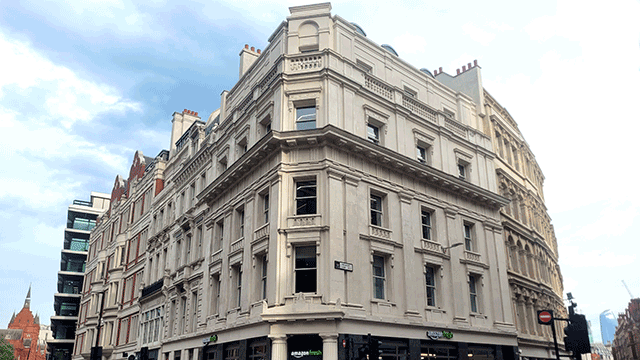Last week, developers Astral and Bee Bee got permission to bulldoze 60ha of woodland in Corby, Northamptonshire.
In what seems a caricature example of ravenous developers raping the countryside for their own wicked ends, the woods will be replaced by 3.5m sq ft of warehouses.
But the scheme has not been called in, even though the woodland had been granted the status of a county wildlife site that provides a habitat for badgers, crested newts and other species the public just loves to protect.
And Astral’s application was unopposed by Campaign to Protect Rural England, the Ramblers Association, the Northamptonshire Badger Group and English Heritage, and supported by English Nature and the Wildlife Trust.
Far from becoming a battleground between developers and environmental groups, the consensus over the wood at Stanion Lane shows that the two sides can reach agreement even on the most sensitive sites. So much so that Bee Bee and Astral, despite their plan to flatten a forest, are now being held up as shining examples of best practice in the field of green infrastructure by English Nature and local environment groups.
In its statement to the Corby borough council planning committee, English Nature said: “The proposals represent a real step forwards in terms of properly taking into account the natural environment’s key contribution to sustainable development and how built development can contribute to this agenda. This development has the potential to demonstrate best practice for green infrastructure delivery.”
Back in 1999, the scene had seemed set for a battle of wills. Bee Bee had bought 405ha (1,000 acres) for £5m from Brent Walker, which had wanted to transform the site into the WonderWorld themepark. Bee Bee’s Alfie Buller made no secret of his plan to raze part of the site, the 88ha (217-acre) Stanion Lane plantation.
Situated beside the A43 and next to ProLogis Kingspark’s Eurohub railfreight park, the wood was a natural expansion site for Eurohub and perfect for national distribution. But the former ironstone quarry, which was transformed into a conifer plantation years ago, was a county wildlife site designated for recreation, so persuading the council and local residents that it should be cleared for industrial development was a potential public relations minefield.
Buller knew that he had timing on his side – Corby had just been awarded funding for expansion by John Prescott and the town was eager to attract private sector investment. Buller also knew that he had the tacit support of the ODPM for his 5,000-home project at Priors Hall to the east of the town, adjacent to the Stanion Lane site. But even with the considerable weight of the deputy prime minister behind Corby’s expansion, it was clear that developers would not be given a free hand to override regional planning policies and ignore environmental impact. Sure enough, Bee Bee’s initial proposals for Stanion Lane were rejected by English Nature and the Wildlife Trust.
“We recognised the need for a different approach,” says Buller, who appointed Corby-based landscaping and environmental land use consultants Lockhart Garrett in 2003 to forge an alliance with the “green brigade”.
Lockhart Garrett director John Lockhart says: “We talk to English Nature and the Forestry Commission on a daily basis, but developers tend to avoid engaging with green lobby groups. We pointed out that Bee Bee was proposing to remove 9% of the town’s woodland and that you can’t do that without mitigating the effects.”
The key to winning over the environmentalists, Lockhart felt, was to detail the flora and fauna at Stanion Lane and to put the site into context within the town and the region. Funded by Bee Bee and its Stanion Lane development partner Astral, Lockhart Garrett set out to map the environmental infrastructure in and around Corby.
Armed with this information, Lockhart Garrett arranged a meeting between all the interested environmental groups, the council and the developers. “We asked the environmental groups what they wanted to see happen and how we could help them to achieve their aims. They were very pleased to be consulted and very proactive with ideas,” says Lockhart.
Offsetting the environmental impact
Gradually, a means of offsetting the environmental impact of the development evolved. Astral and Bee Bee offered a comprehensive mitigation package in return for permission to fell part of the mature conifer plantation. The package now includes planting an equivalent area of native woodland, improving the remaining 28ha of woods at Stanion Lane and providing public access, and the creation of a £1.5m fund to improve existing woods in Corby and maintain the new landscaping.
But Bee Bee’s mitigation plan goes much further than dealing with its site at Stanion. It is also proposing joint venture agreements with the council to tackle the worst of Corby’s housing and environmental problems. “We are hoping to sell 5,000 houses at Priors Hall, so it makes sense for us to look at the town’s existing fabric and try to fix the problems. At the moment, no one aspires to live in Corby. We want to change that,” explains Buller.
Last year, the developer published a vision of Corby that proposed new green areas and wildlife corridors. “This fitted into the aspirations of the Milton Keynes and South Midlands Green Infrastructure Framework being drawn up by the Environment Agency, English Nature and the Countryside Agency,” says Lockhart.
Creating a sense of place
Northamptonshire is a key area for growth under the government’s plans and Bee Bee is well placed to benefit. Since buying Priors Hall, Bee Bee has invested in Kettering and Wellingborough, where this week its development partner, Bovis Homes, received consent for 3,000 homes.
“The growth agenda is about creating a quality environment that people will aspire to live in. The green infrastructure is fundamental to creating a sense of place. The houses come after that,” says Buller.
He is critical of the housebuilders that treat landscaping as window dressing. “For us, the green areas are what the place is about. If you can get them right, the houses will work and you will have a sustainable community.”
This approach is just what Northamptonshire county council is hoping to foster through its River Nene Regional Park project, which includes the Stanion Wood scheme.
Jason Longhurst, director of the River Nene Regional Park, explains: “Our role is to create a sustainable environment that benefits the community and business. We want developers to treat the green infrastructure in the same way as the built environment. They contribute to roads and schools, so why not woods and landscaping? Our argument is that if we do this right, everyone benefits.”
He applauds Bee Bee’s approach in Corby. “Bee Bee and its partners have realised that there is little sense in pouring money into improving their site if it is surrounded by a degraded landscape. It makes business sense to invest in a strategy to improve the whole area. We would like to see all developers follow their example.”
The River Nene Regional Park has just won £4.8m funding from the ODPM to implement its green infrastructure plans, which include signing up a sponsor for the 2007 International Festival of the Garden that will be held in Corby.
And the favoured site? Bee Bee’s new settlement at Priors Hall.
|
|
|
More than 5,000 homes and 3.5m sq ft of sheds are proposed for the former quarry site |
|
The Stanion Lane development forms just part of Bee Bee development’s larger plans for the regeneration of nearly 500ha of east Corby. As well as the 3.5m sq ft of sheds planned for the Stanion Lane site, Bee Bee is also building 5,100 homes directly to the north, on a site called Priors Hall. Both Stanion Lane and Priors Hall were, in the 1940s, ironstone quarries used by the local steel industry. In 1982, following the closure of the Corby steel mills, planning permission was granted to Brent Walker to turn the site into the WonderWorld themepark, which was never built, and the site was designated by Catalyst Corby as the focus for the town’s expansion. In 1999 Bee Bee Developments bought Brent Walker’s Corby land holdings for £5m. Bee Bee’s plans for the land, which stretches from the Priors Hall golf course to the north-east of the town to Stanion Lane in the south-east, were granted planning approval last April and include more than 200ha of parkland and woods. The Priors Hall site is located to the east of the Rockingham Speedway motorcycle track, north of the A43 at Weldon. The design of the scheme, with the highest density in the west nearest to the town centre and lower density to the east, aims to “ease” the town into the countryside. |
|
1. Stanion Lane 2. Weldon village 3. North Weldon industrial estate 4. Gretton Road 5. Rockingham Speedway 6. Kirby Hall 7. Kirby Lane 8. Priors Hall Golf course 9. A43 Stamford Road |










